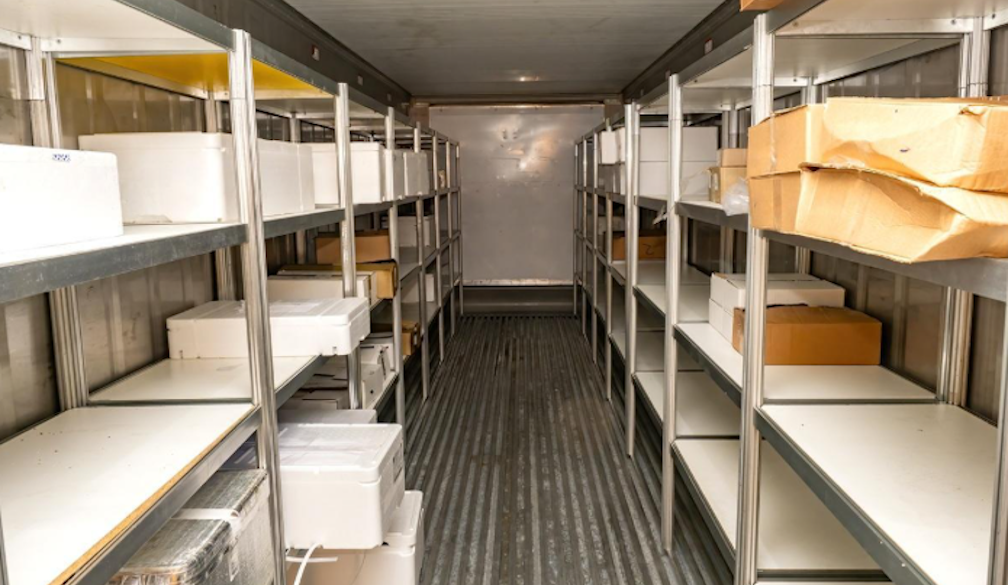Freezer Room Hire in Perth: The Ultimate Solution for Reliable Cold Storage
- Written by Modern Australian

Ever found yourself in a cold storage crisis and wondering how to save your perishables before they go bad?
Well, this isn't something new.
Perth restaurant owners and event managers frequently face this challenge, especially when unexpected demand hits or equipment fails at the worst possible moment. That's where freezer room hire swoops in to save the day - and potentially thousands in spoiled inventory.
We recently spoke to one of the local seafood suppliers in Perth, and he called freezer rental units "business lifesavers" during the holiday rush. Smart move on his part. We also did some more research, and here's what we got to know.
Freezer Rooms - Renting vs. Buying
Let's get real about something - dropping massive capital on permanent freezer installations isn't always the smartest play.
Think about it. Why lock yourself into a fixed-size solution when your storage needs fluctuate with the seasons? Catering businesses boom during summer events and wedding season, then quiet down. Meat processors see holiday spikes, and then everything feels ordinary. Your cold storage needs rarely stay constant.
Freezer room hire gives you that precious control and flexibility. Scale up during your busy periods, scale down when things cool off (pun absolutely intended). No wastage, no emptying your bank account.
The numbers don't lie either. That $20 billion in annual food wastage across Australia? Much of it stems from improper storage when businesses can't quickly adapt to their capacity. By getting in touch with a freezer room provider, you can do good for yourself and contribute to reducing food waste. Absolute win-win!
What Actually Makes a Quality Freezer Room?
Here's something most providers won't tell you upfront - the devil's in the details when it comes to freezer construction.
Ever heard of frost heave? Probably not, unless you've dealt with a failing freezer room. It's that nasty phenomenon where moisture in the ground beneath your freezer freezes, expands, and eventually warps your entire structure. Quality freezer room hire units prevent this through specialized construction techniques, a critical feature that separates the pros from the amateurs.
Concrete slab construction makes all the difference, too. We've seen cheap units with inadequate foundations fail spectacularly, usually at the worst possible time. Not pretty when you've got thousands worth of stock inside.
When a Temporary Cool Room Actually Makes Perfect Sense
Still wondering if renting makes sense for your situation? Consider these scenarios we've seen play out repeatedly:
- Your summer catering schedule went bonkers (congrats on your success!)
- Your main freezer chose the worst possible moment to die
- You're testing a new product line but aren't ready for permanent infrastructure
- You scored a fantastic bulk deal, but have nowhere to store it
- Your business is seasonal, and permanent installation would sit empty half the year
The Non-Negotiable Features Worth Checking
Not all freezer rooms hit the mark. To be honest, some miss by a mile.
The trailer connections matter enormously if you're planning to move your unit. All decent providers equip their trailers with 7-pin round lighting plugs - the industry standard that ensures you won't end up stranded with incompatible equipment.
Power requirements can trip you up, too. Quality units run on standard 10A single-phase outlets. Seems like a minor detail until you discover the cheaper alternative needs specialised power you don't have access to. Suddenly, that "bargain" doesn't look so appealing.
And hey, breakdowns happen . Even with top-notch equipment. The difference? A provider with 24/7 technician support versus one who'll get back to you "sometime next week." When you've got thousands in perishable stock on the line, that difference makes total sense.
The Fine Print Worth Reading
Nobody enjoys contract discussions, but they matter tremendously with freezer room hire.
The standard hire terms typically start at 3+ months for the best rates. Shorter terms exist but usually come with premium pricing. Makes sense when you think about the logistics involved.
A word to the wise - be ready with a photo ID and a valid credit card. This isn't the provider being difficult; it's standard practice for equipment with this value. The card serves as security in case of damage or if the unit comes back looking like it hosted a mud-wrestling competition.
Speaking of cleaning, ask about those fees upfront. Some providers build them into the quote, others hit you with them afterwards. Neither approach is wrong, but surprises are never fun when they involve your bank account.
Making Your Decision Without the Headaches
Choosing the right freezer room hire doesn't need to be complicated. Start by honestly assessing your timeline - how long will you actually need the extra capacity?
If you're testing the waters, begin with a medium-term arrangement. This gives you enough runway to evaluate whether the solution fits your operation without excessive commitment.
Ask pointed questions about temperature consistency. This isn't just about whether the unit can reach 18°C - it's about how precisely it maintains that temperature despite external conditions. Those fluctuations can silently damage product quality, even if everything technically stays frozen.
Also, before signing anything, arrange a quick site assessment. A reputable provider will check your access, power supply, and specific requirements rather than trying to sell you a one-size-fits-all solution.
Solve Your Food Storage Concerns With Freezer Room Hire Solutions
For businesses in Perth's food handling sector, freezer room services solve unique challenges our climate creates. With the right provider focused on quality construction and responsive support, you gain both operational flexibility and peace of mind.
The bottom line? Freezer room hire gives you professional-grade cooling without the capital outlay. It's not just about solving a storage problem, it's about giving your business room to breathe, adapt and grow without freezing your capital in the process.



















